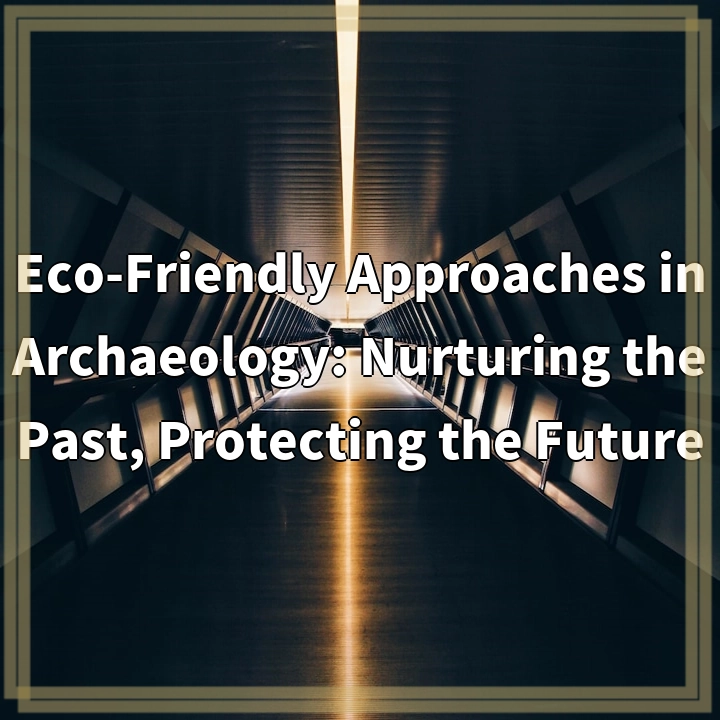
What it is:
Eco-Friendly Approaches in Archaeology aim to minimize the negative environmental impact of archaeological research and promote sustainable practices throughout the process. It involves integrating principles of environmental stewardship into archaeological fieldwork, excavation, conservation, and public engagement.
Real-World Problems:
1. Solvent-based Conservation Materials:
Solvent-based materials traditionally used in archaeological conservation, such as adhesives and coatings, can release harmful volatile organic compounds (VOCs) into the environment. These VOCs contribute to air pollution and can have detrimental effects on both human health and ecosystems.
2. Carbon Footprint of Fieldwork:
Archaeological research often involves extensive fieldwork that requires transportation, accommodation, and the use of heavy equipment. These activities contribute to carbon emissions and the overall carbon footprint of archaeology projects. Finding ways to reduce carbon emissions, such as carpooling, using renewable energy sources, or offsetting carbon emissions, is essential for eco-friendly archaeological practices.
3. Soil Erosion and Land Disturbance:
Excavation methods used in archaeology can sometimes lead to unintended consequences, such as soil erosion and destruction of delicate ecosystems. Large-scale excavation projects can permanently alter landscapes and disturb habitats. Implementing sustainable excavation practices, such as minimal intervention techniques, proper backfilling, and re-vegetation, can help mitigate these issues.
4. Waste Management:
Archaeological excavations generate waste, including discarded materials, packaging, and single-use plastics. Improper waste management can lead to pollution of water sources and harm local wildlife. Implementing efficient waste management systems, such as recycling, reducing single-use plastics, and responsible disposal, is crucial for minimizing the environmental impact of archaeological projects.
5. Public Engagement:
Involvement of local communities and public engagement activities in archaeology is essential for building awareness and support. However, inadequate planning and resource management for these activities can result in significant environmental impact, including increased waste generation and damage to heritage sites. Implementing eco-friendly strategies, such as minimizing waste at public events, promoting sustainable transportation options, and educating visitors about their role in conservation, can help ensure responsible public engagement.

Solutions to Eco-Friendly Approaches in Archaeology:
1. Eco-Friendly Conservation Materials:
Using solvent-free and low VOC materials in archaeological conservation can help minimize environmental impact. Opting for sustainable and eco-friendly alternatives, such as water-based adhesives and coatings, reduces the release of harmful compounds into the atmosphere.
2. Carbon Footprint Reduction:
Reducing the carbon footprint of archaeological fieldwork can be achieved through various strategies. These include using sustainable modes of transportation, adopting renewable energy sources, implementing energy-efficient practices, and offsetting carbon emissions through carbon offset projects.
3. Sustainable Excavation Practices:
To mitigate soil erosion and land disturbance, archaeologists can employ sustainable excavation methods. These include promoting minimal intervention techniques, proper backfilling and re-vegetation of excavated areas, and ensuring adherence to environmental impact assessment guidelines.
4. Responsible Waste Management:
Implementing effective waste management systems is crucial for minimizing the environmental impact of archaeological projects. This includes prioritizing recycling, reducing the use of single-use plastics, promoting responsible disposal methods, and incorporating waste management plans into project designs.
5. Sustainable Public Engagement:
Engaging the public in archaeology should be done in an eco-friendly manner. Strategies include minimizing waste generation at public events, providing sustainable transportation options, educating visitors about conservation practices, and involving local communities in the decision-making process for archaeological projects.















